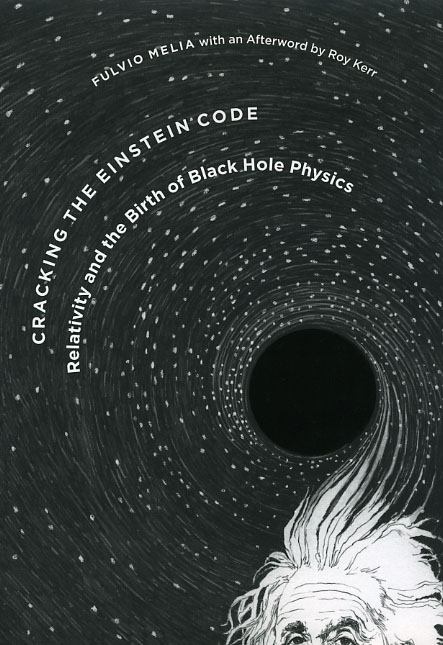The Birth of Black Hole Physics

Black holes are undoubtedly one of the all-time coolest phenomena in astrophysics. With his theory of relativity, Einstein initially predicted their existence as the inevitable result of gravitation on some of the more massive objects in the universe. But according to Fulvio Melia’s new book Cracking the Einstein Code: Relativity and the Birth of Black Hole Physics, for more than four decades after the publication of Einstein’s ideas, this phenomenon, along with the rest of Einstein’s theory, remained a curious abstraction for most scientists who lacked the final set of equations that would allow them to empirically verify its principles.
Then came Roy Kerr, the twenty-nine-year-old Cambridge graduate who solved the great riddle in 1963, transforming Einstein’s theory into an applicable description of how real objects in the universe actually behave—including black holes. As a recent review in the New Scientist notes:
The most intriguing application of Kerr’s solution is in describing objects that are so massive and so dense that their gravitational field prevents even light from escaping. Einstein himself was skeptical that such “black holes” could exist in nature. Just as Kerr was developing his solution, however, the first compelling evidence for black holes was found. Today, black holes are thought to be commonplace, including the “supermassive” variety that lurk at the centre of most galaxies, and Kerr’s solution has become a vital tool in astrophysics and cosmology.
Indeed, today more than 300 million supermassive black holes are suspected of anchoring their host galaxies across the cosmos, and the Kerr solution is what astronomers and astrophysicists use to describe much of their behavior.
Offering a detailed account of Kerr’s great discovery Fulvio Melia’s Cracking the Einstein Code: Relativity and the Birth of Black Hole Physics showcases of some of the most important science of the twentieth century.
For more check out the review in the New Scientist or read this excerpt from the book.